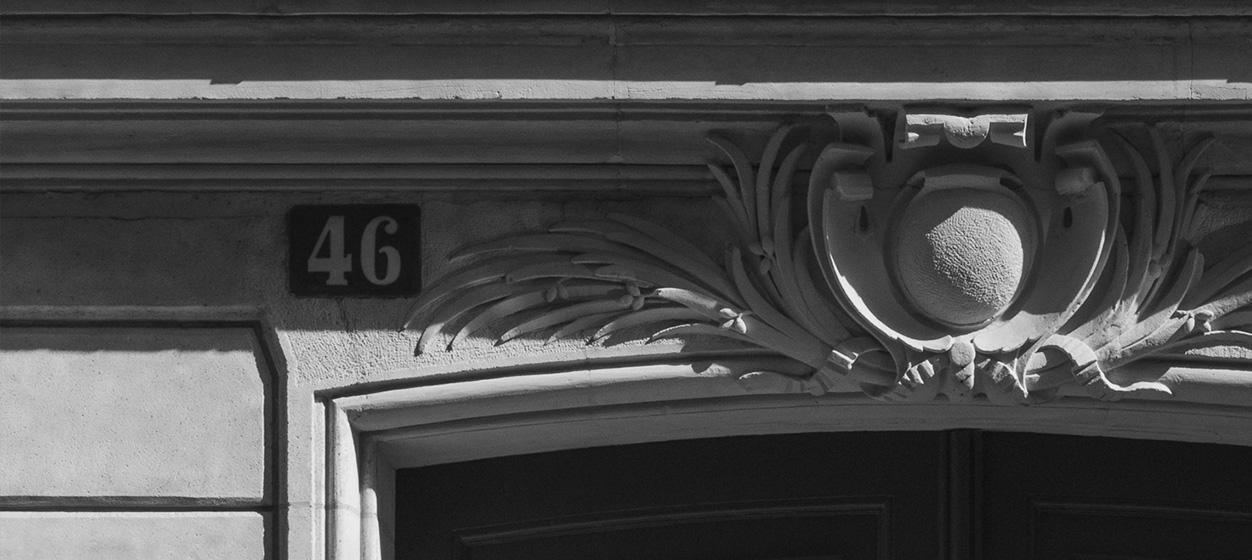Liaigre and Asia - part 2
Liaigre’s style has a multitude of inspirations that over the years have contributed to the creation of a unique universe. This aesthetic vocabulary combines the rigor of late 18th-century French furniture (commonly referred to as Louis XVI) with the modernism of the 1920s-30s. However, alongside these fundamental influences, Liaigre’s Parisian roots connection to Asia plays a vital role in the brand’s identity. China, Japan, Vietnam, and Thailand are regular guests in the Studio’s creative imagination, whether through interpreting shapes or adopting a particular technique, material, or color palette. An overview…
See details
Liaigre’s style has a multitude of inspirations that over the years have contributed to the creation of a unique universe. This aesthetic vocabulary combines the rigor of late 18th-century French furniture (commonly referred to as Louis XVI) with the modernism of the 1920s-30s. However, alongside these fundamental influences, Liaigre’s Parisian roots connection to Asia plays a vital role in the brand’s identity. China, Japan, Vietnam, and Thailand are regular guests in the Studio’s creative imagination, whether through interpreting shapes or adopting a particular technique, material, or color palette. An overview…
Close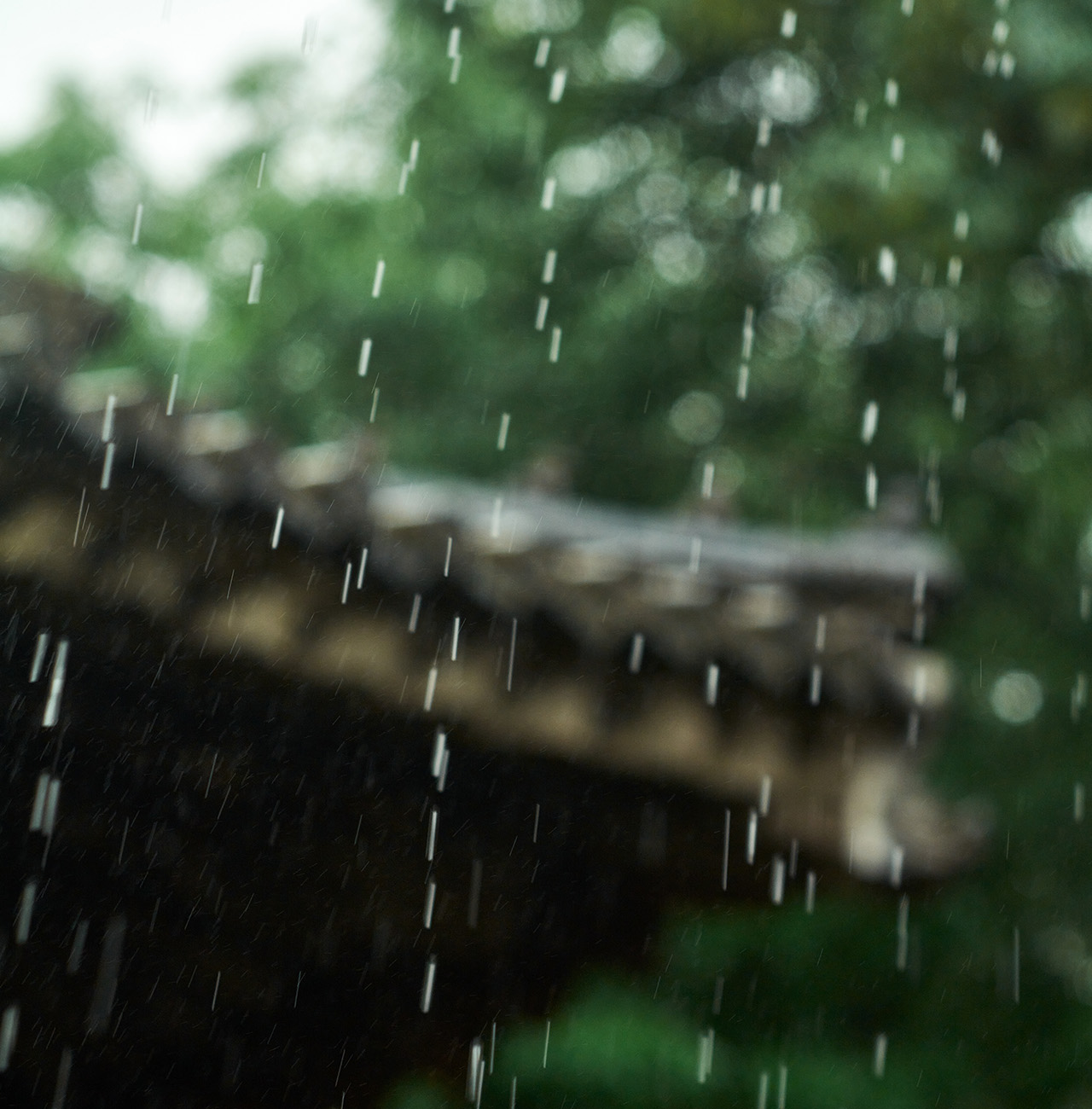
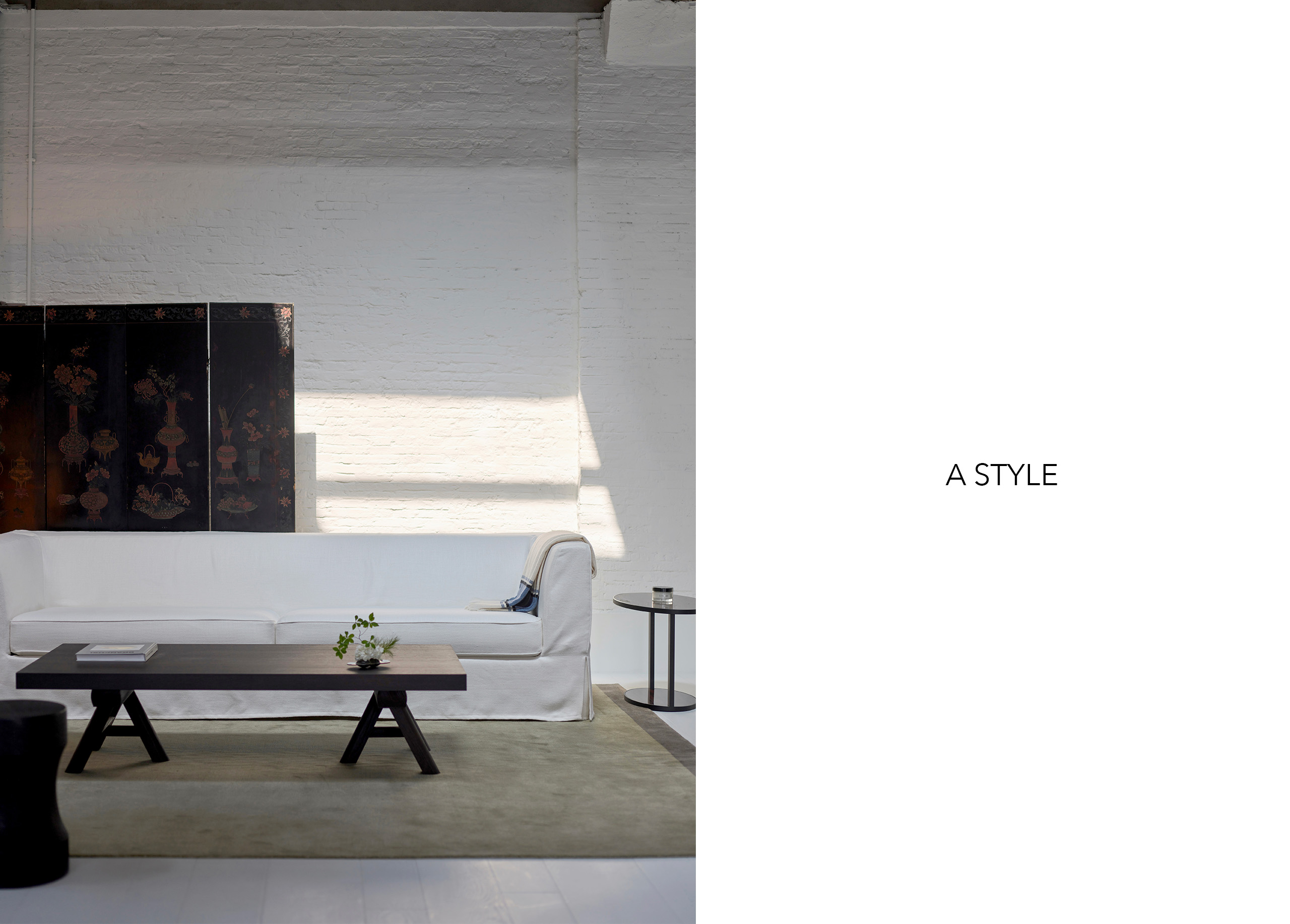
When we think of the studio’s creations (furniture, lighting, accessories), we usually speak of pure forms… This refined style became established in the 1980s. The ideal aesthetic developed by Christian Liaigre and his team consisted of designing objects and later removing the superfluous elements, in order to retain only the essential. Four decades later, this creative principle remains unchanged. This economy of line has given rise to a “clear line” that characterizes all Liaigre creations. In its elegant simplicity, this philosophy of design has all of the hallmarks of writing: it is a drawing or calligraphy in space, reminiscent of furniture and everyday objects from the Far East. Certain pieces, such as the Nagoya desk, the Pluie or Nagato stools, perfectly illustrate this special relationship with drawing…
But it’s not just about appearances, it’s also about a state of mind, the definition of an art of living that’s concerned with a certain depth, authenticity, and a relationship with time that disregards fleeting trends. It’s a question of sensibility, a poetry of the everyday expressed through a domestic environment and objects whose apparent simplicity conceals their rigorous elaboration.
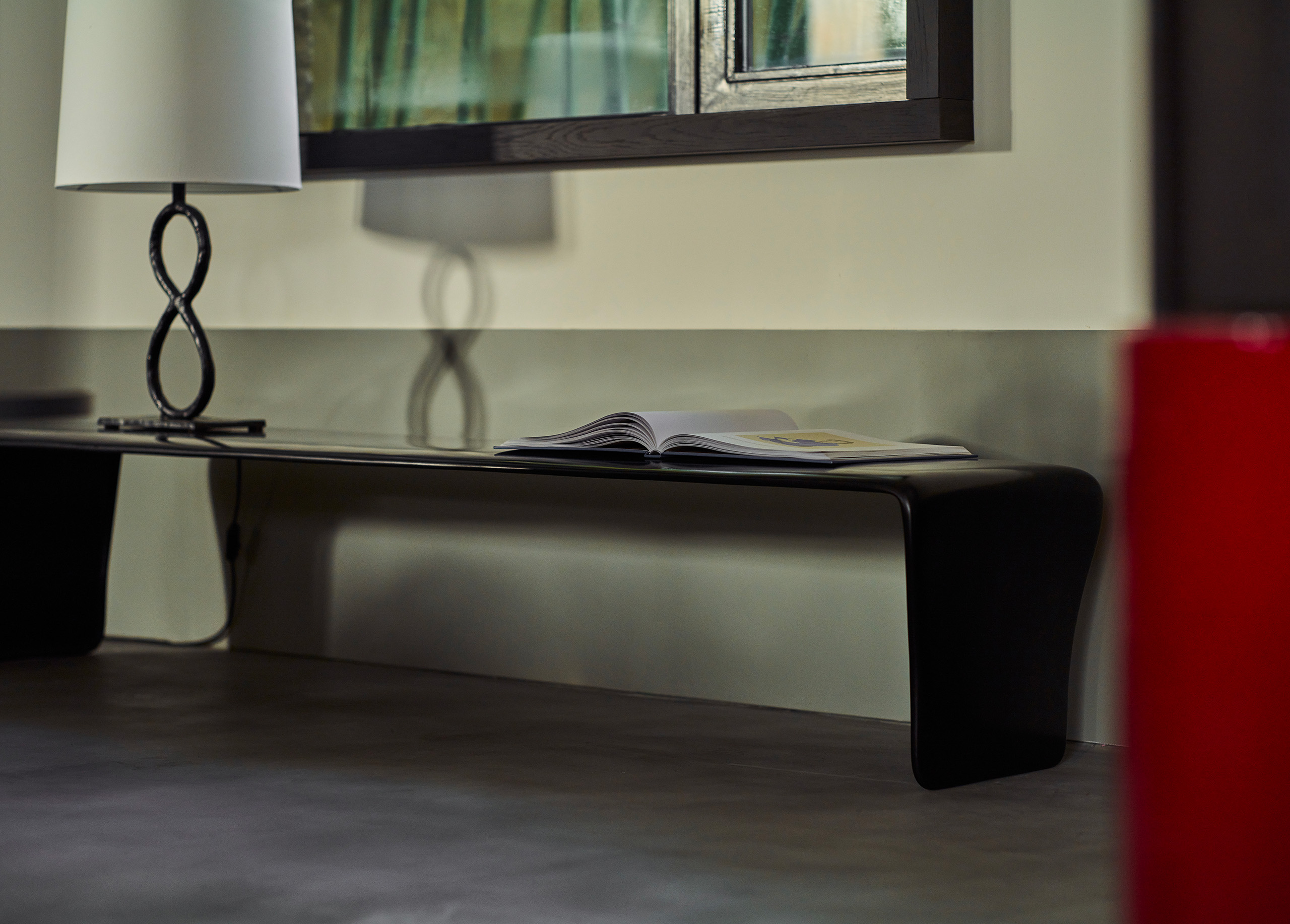
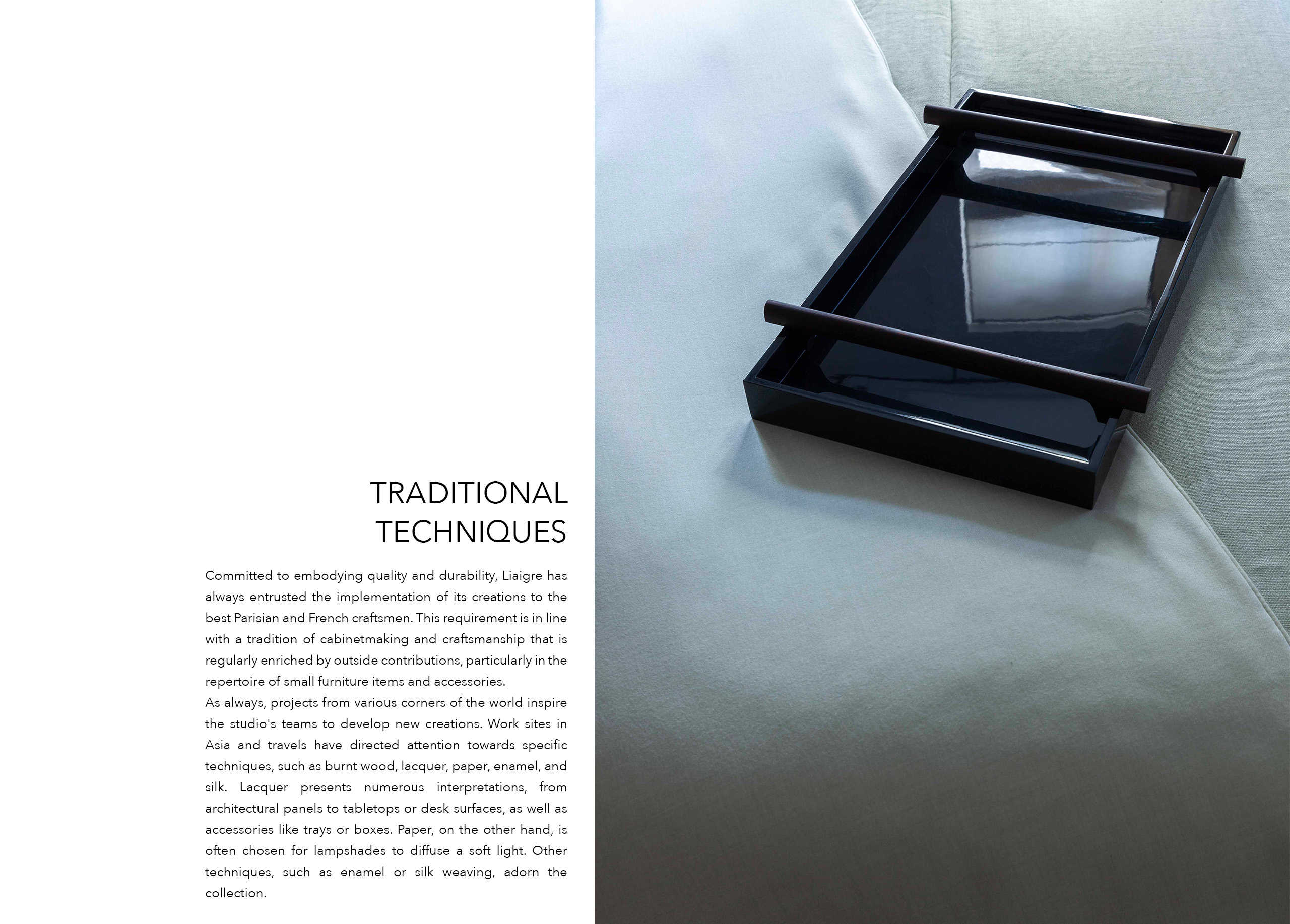
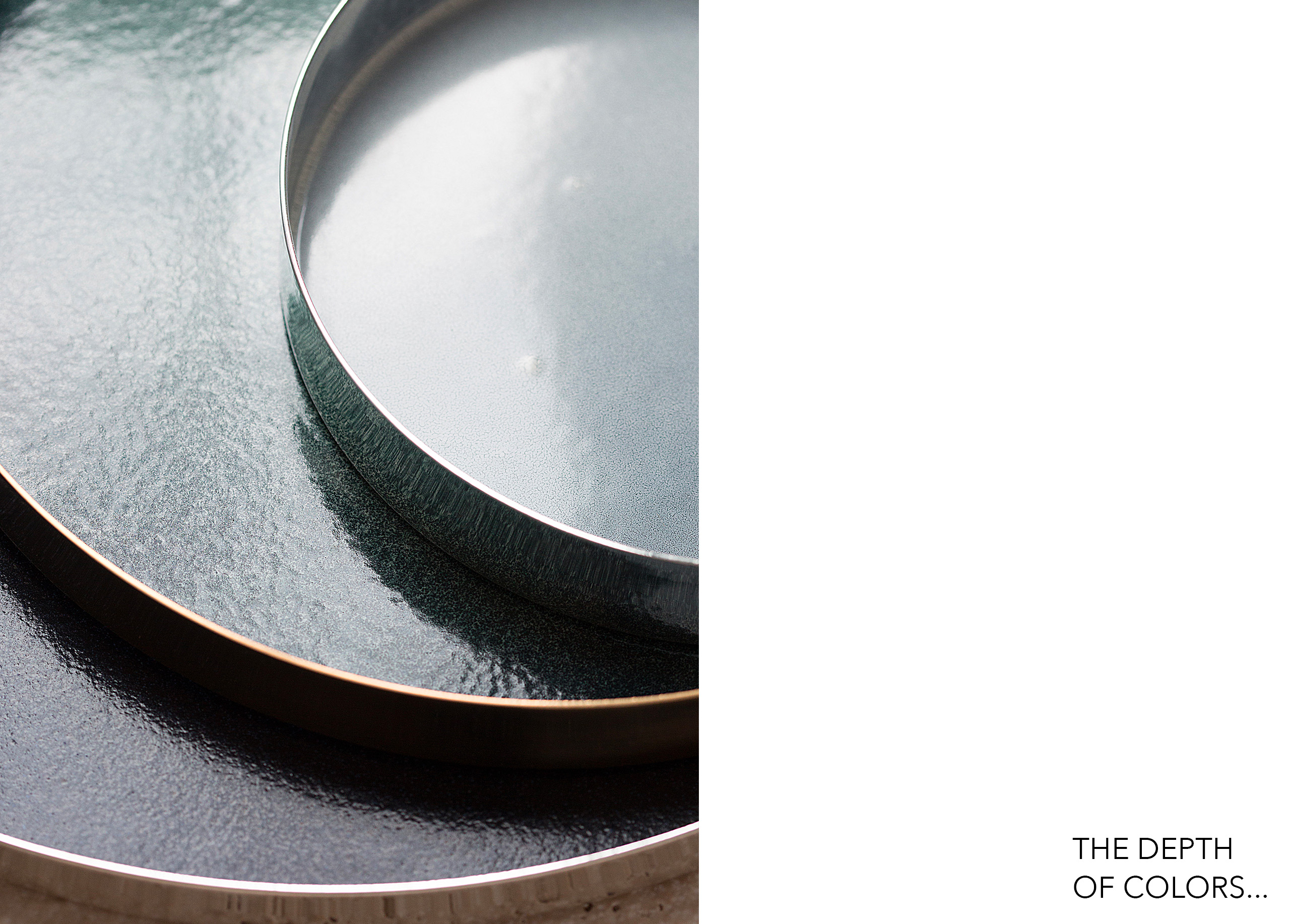
Asia excels in its subtle approach and use of color. There is a play of tones, as well as delicate contrasting effects, such as matte or glossy surfaces, that change the perception of color. This approach resonates with the way Liaigre manipulates color. Liaigre’s wide range of blacks and whites, along with a palette of deep reds, blues, and yellows, evoke the nuances found in Asia—from lacquer and enamel tones to those employed in silk weaving. Color in Liaigre’s work act as a punctuation mark, appearing sporadically to assert articulation, highlight details, create a sense of discontinuity, or participate in the staging of a space.Here, we observe an analogy with how color is expressed in traditional dwellings, particularly in China and Japan. While this shared sensibility cannot be considered a direct influence, it can be seen as an ongoing creative dialogue that grows alongside Liaigre projects and international expansion. Here again, we can observe a kind of analogy with the way color expresses itself in traditional housing, particularly in China and Japan.
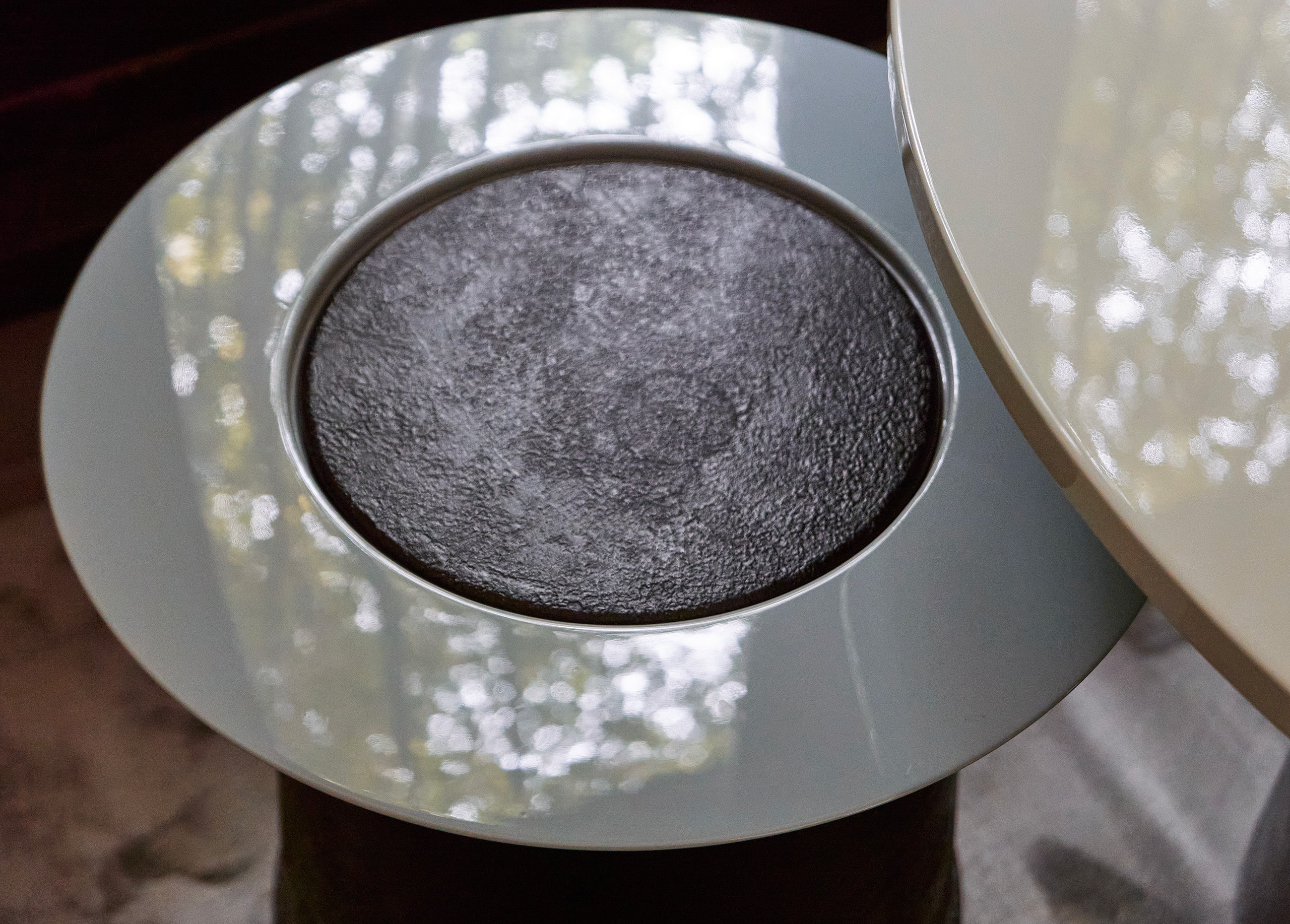
Discover other
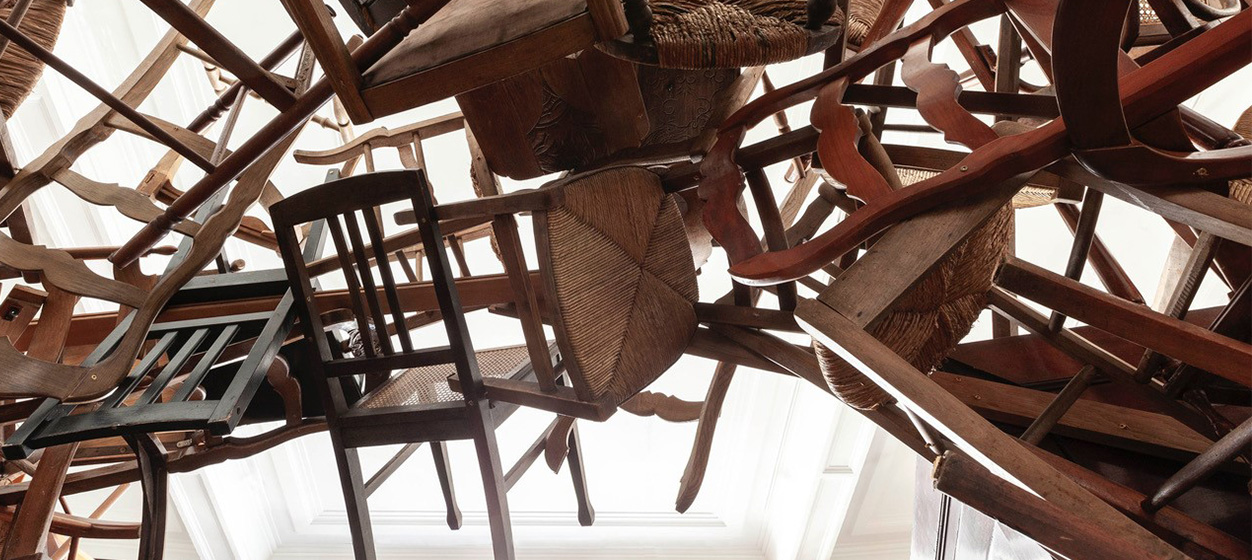
“Nest in Liaigre”, Tadashi Kawamata
